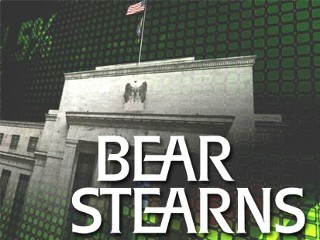 Tomorrow will be the 12th anniversary of the Great Recession’s fiscal origin moment: ‘On June 22, 2007, Bear Stearns pledged a collateralized loan of up to $3.2 billion to “bail out” one of its funds, the Bear Stearns High-Grade Structured Credit Fund, while negotiating with other banks to loan money against collateral to another fund, the Bear Stearns High-Grade Structured Credit Enhanced Leveraged Fund — from Wikipedia.
Tomorrow will be the 12th anniversary of the Great Recession’s fiscal origin moment: ‘On June 22, 2007, Bear Stearns pledged a collateralized loan of up to $3.2 billion to “bail out” one of its funds, the Bear Stearns High-Grade Structured Credit Fund, while negotiating with other banks to loan money against collateral to another fund, the Bear Stearns High-Grade Structured Credit Enhanced Leveraged Fund — from Wikipedia.
Also on June 22, 2007, my life in Humboldt County took full root, an origin event-day toward becoming local.
My son and I had just moved here three weeks and a day earlier. We both got jobs that day — he in construction, me at a local liquor store, where a bit later became manager. A shift in living that day.
Details/background and my last post on this particular subject in 2017 (here), five years ago (found here), and my retirement post, which also mentions the meltdown (here).
Anyway, it took some time to figure the coincidence of June 22, 2007, in personal terms, and for a huge chunk of the whole world.
August 2007, from CNN Money:
The hedge funds’ troubles started in April, worsened in May, and by mid-June had become a full-blown crisis.
Even Bear’s injection of $1.6 billion couldn’t save them.
By mid-July both were next to worthless.
Less than three weeks later, the stock was way down, Spector was gone, and Bear was selling more than $2 billion in debt — both to shore up its balance sheet and to demonstrate that its assets were still valued.
And the kick was in:
To oversimplify the Bear Stearns situation, the subprime mortgage-backed securities market behaved well outside of what the portfolio managers expected, which started a chain of events that imploded the fund.
…
Unfortunately, the Bear Stearns portfolio managers failed to expect these sorts of price movements and, therefore, had insufficient credit insurance to protect against these losses. Because they had leveraged their positions substantially, the funds began to experience large losses.
— online post Sep 6, 2007 at investopedia.com.
And further:
Demise of Bear Stearns, considering the obscene amounts of so-called money sought after and thrown around near-random, was most-rapid and domino-like — in just more than a year, an 80-year-old “Most Admired” global investment bank worth billions simply ceased to exist.
Then in March 2008, after a weekend of intense negotiations, the Federal Reserve approved a $30 billion credit line to help JPMorgan Chase acquire Bear.
Reflecting Bear’s dire straits, JPMorgan agreed to pay only about $270 million in stock for the firm, which had run up big losses on investments linked to mortgages.
JPMorgan agreed to pay a mere $2 a share to buy all of Bear — less than one-tenth the firm’s market price two days before.
The price was later raised to $10 a share.
— New York Times
All seems quaint now…
(Illustration: Salvador Dali’s ‘Hell Canto 2: Giants,’ found here).